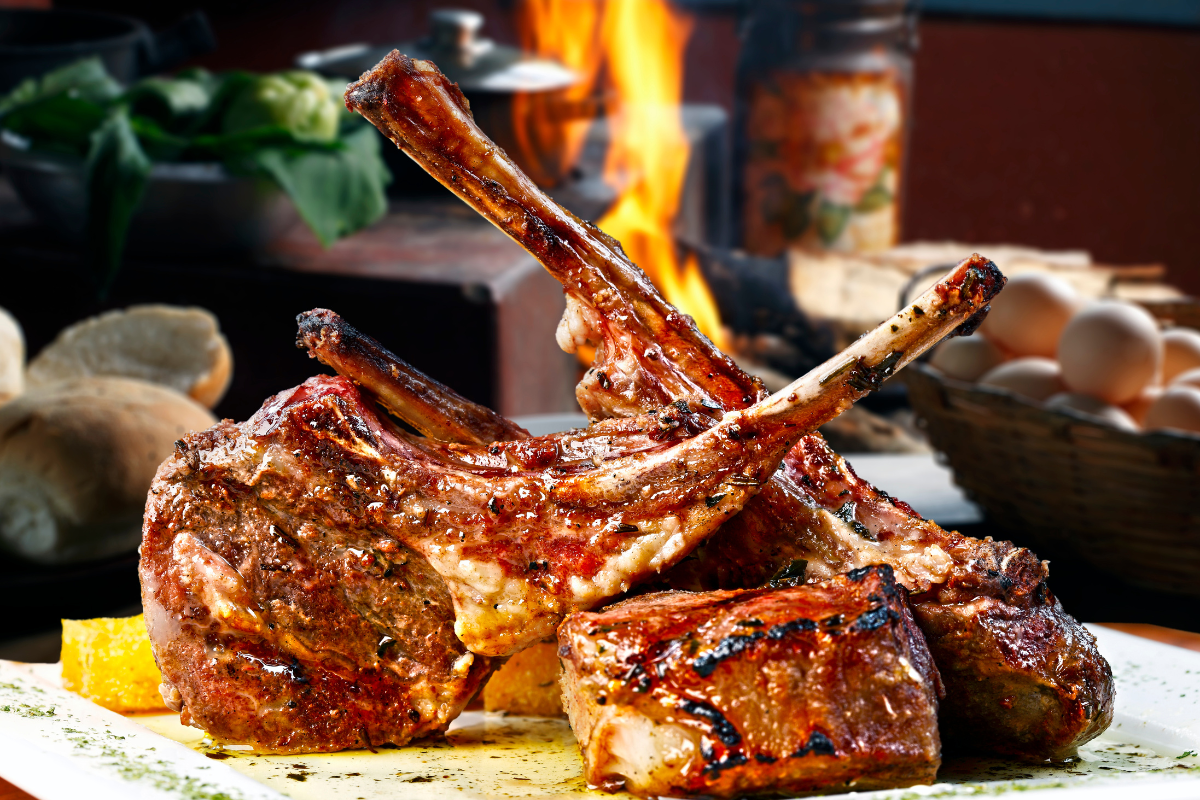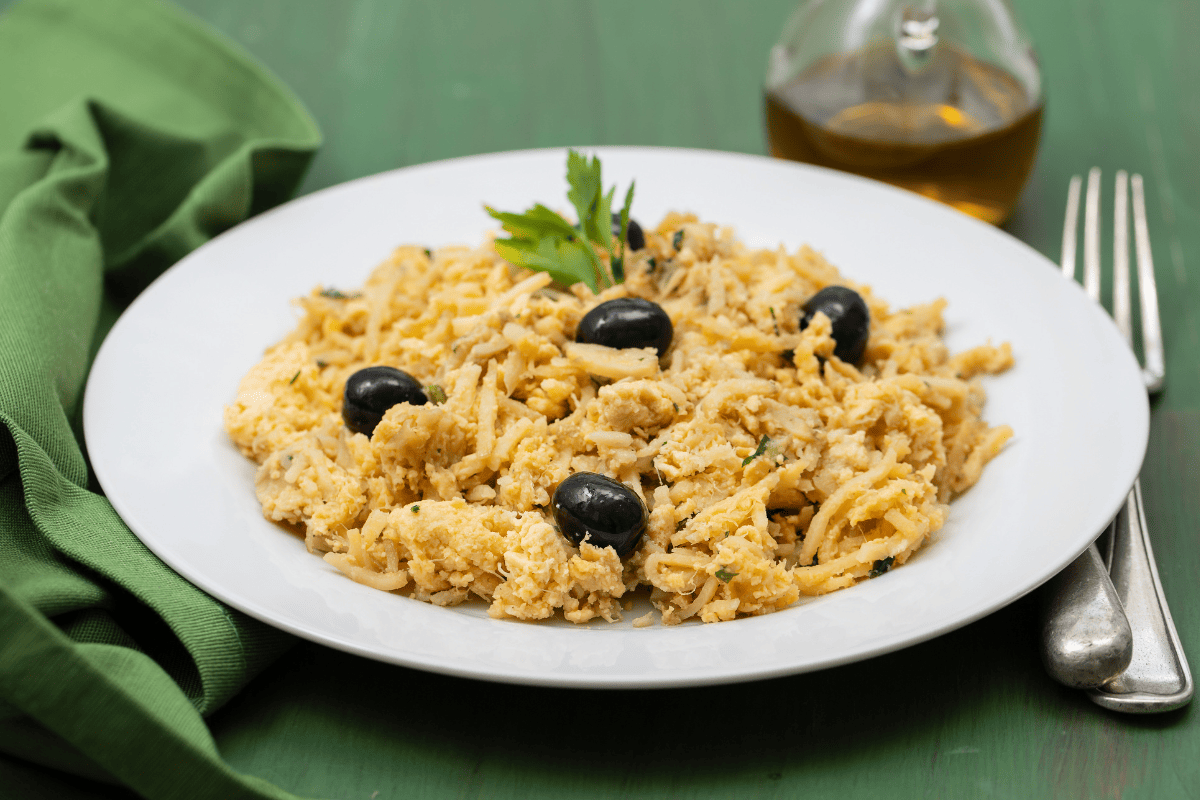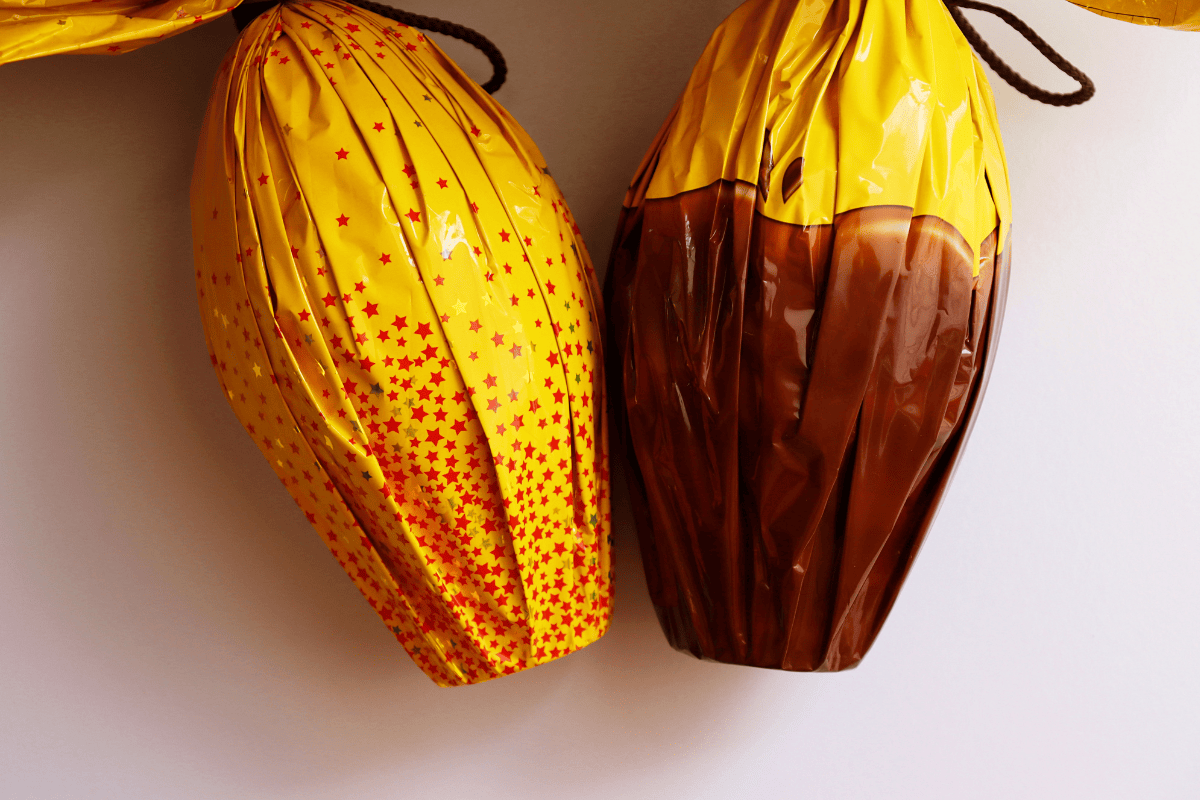Easter is celebrated with various customs and traditions around the world. A rich meal is often the focal point, especially after weeks of fasting during Lent. One of the most ubiquitous items on the Easter dinner table is lamb. This tradition has deep historical and cultural roots, making it a significant part of the holiday festivities for many families. Today, we will teach you how to make a grilled rack of lamb for a simple yet decadent holiday centerpiece.
Why is Lamb Eaten at Easter?
In the Christian faith, Jesus is twice referred to as the “Lamb of God” in the Gospel of John. Eating lamb at Easter is meant to commemorate the sacrifice of Jesus and to celebrate his resurrection.
Lamb is also an important symbol in Judaism. The Paschal Lamb was the animal sacrificed in the first Passover on the eve of the Exodus. Its blood was painted over the doorways of the homes of Jewish slaves so they would be spared the Tenth Plague of Egypt: the death of the firstborn sons. For this reason, lamb is also often eaten at Jewish Passover dinner.
In addition, Easter and Passover often coincide with the Vernal Equinox, which was an important date for pre-Christians. Disablot, for example, was a Scandinavian tradition dating from prehistoric times. A blood sacrifice was made in honor of the disir, female spirits associated with a bountiful harvest. The festival also honored the Valkyries, winged female deities who guided the souls of the dead to Odin. Although few accounts exist of exactly what was sacrificed, it is reasonable to assume that Spring lambs were on the docket.
Grilled Rack of Lamb Variations
In addition to a grilled rack of lamb, there are plenty of other preparations that appear in various cuisines around the world. In Greece, for example, magiritsa uses the offal, or innards of the lamb, to make a hearty stew with wild greens and a zesty lemon sauce. The Greeks are also famous for their souvla: a whole lamb spit-roasted over hot coals.
The Finns have a recipe for Finskt lamm, which involves roasting a leg of lamb then covering it with a sweet, red currant glaze. It is usually served with roasted potatoes and other vegetables.
In Italy, a special preparation of lamb called “abbacchio” is actually regulated by the European Union with the Protected Geographical Indication mark. The term refers to the type of lamb used as opposed to a distinct recipe. An abbacchio is simply a suckling lamb that is between 28 and 40 days old and weighs around 15 lbs. It can be grilled, roasted, stewed, or braised, so long as it fits the age and weight requirements.
Suffice to say, you’re not limited to grilled rack of lamb when it comes to Easter. However, the simplicity of this recipe makes it a top contender, in our opinion.
Helpful Hints for Perfect Grilled Lamb
Grilled rack of lamb is pretty fool-proof, but there are a few things you will want to keep in mind to get the best flavor and texture:
- Don’t skip the marinade: the marinade is important in flavoring the meat, but it is also essential for tenderizing it.
- Use the right heat: sear the outside quickly with high heat, then cook the inside of the meat slowly over indirect heat.
- Don’t overcook the lamb: lamb is best served medium rare (130 to 135 degrees Fahrenheit.) You can get away with medium, but don’t go any higher than this, or you’ll get a pretty tough texture.
- Cover exposed bones with foil: most racks of lamb come “frenched,” with the rib bones trimmed for elegance and convenience, should you wish to eat yours cave-man style. These bones can burn, so you will want to cover them with aluminum foil before grilling.
Side Dishes for Grilled Rack of Lamb
The right side dishes are nearly as important as the lamb itself. Lamb has a generally mild flavor that is compatible with a wide variety of sides. Instead of the usual roast potatoes or green beans, why not try a few of the following:
- Caramelized Leeks with Balsamic Reduction
- Steakhouse Crispy Brussels Sprouts (Couve de Bruxelas)
- Bahian Forbidden Rice for a bit of surf-and-turf
- Steakhouse Garlic Mashed Potatoes
- Brazilian Cheese Bread (Pao de Queijo)
Grilled Rack of Lamb Recipe
This dish is not only elegant and flavorful but also surprisingly simple to prepare, making it perfect for both intimate family gatherings and festive feasts.
Ingredients for Grilled Rack of Lamb:
2 racks of lamb, frenched (about 1 ½ pounds each)
4 cloves garlic, minced
2 tablespoons fresh rosemary, chopped
2 tablespoons fresh thyme, chopped
1 tbsp brown sugar or honey
1/2 cup olive oil
Juice of two lemons (about 2 oz)
2 tsp of salt (more to taste)
Freshly ground black pepper
Directions:
Prepare the Marinade for the Grilled Rack of Lamb
- In a medium bowl, whisk together the minced garlic, chopped herbs, brown sugar, olive oil, lemon juice, salt, and black pepper.
- Place your lamb in a resealable freezer bag or a shallow dish you can cover. Pour the marinade over the meat and make sure it is completely coated.
- Leave the meat to marinate in the fridge for at least six hours, preferably overnight.
Get Ready to Grill
- Remove the rack of lamb from the fridge and let it come to room temperature (about 20 minutes). Cover the exposed bones with tin foil.
- While the meat rests, preheat your grill: set it on “high” on one side only. For coal grills, mound the charcoal off to one side to contain the heat there as much as possible.
Grill the Lamb
- Start by searing the rack of lamb with the fat side down. (This is the more rounded, meaty part, while the back is more bony.) Grill for about four minutes, or until you can see grill marks. Then, flip the meat and sear for another 2-3 minutes on the other side.
- Transfer the rack of lamb to the cooler side of the grill. Cook on indirect heat until the meat reaches an internal temperature of 130 degrees Fahrenheit (15-20 minutes).
Rest the Grilled Rack of Lamb
- Wrap the lamb in foil and allow it to rest for fifteen minutes. Then, slice along the bones to make individual portions and serve. Or, carve it tableside for added flair.
Where to Buy Rack of Lamb
You can buy a rack of lamb in most grocery stores these days, but the quality is not guaranteed. The flavor and texture of lamb is highly dependent on the age of the animal and where it was raised. For a special holiday meal, you will want only the finest meat for your guests.
For our money, you can’t go wrong with Australian lamb. Aussie lamb is free range and grazed exclusively on the country’s wide-ranging grasslands. The taste is naturally mild, lean, and clean with an unsurpassed tenderness.
Luckily, you can order Australian lamb for your Easter Dinner to be delivered right to your door via our online Butcher Shop. Be sure to check out our current coupons for deals on butcher box orders, including freebies like Brazilian sausage.




